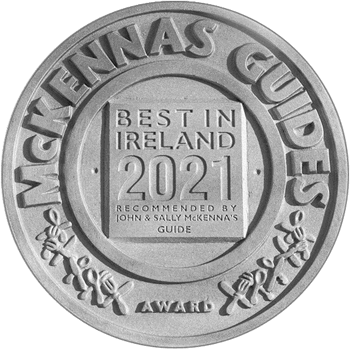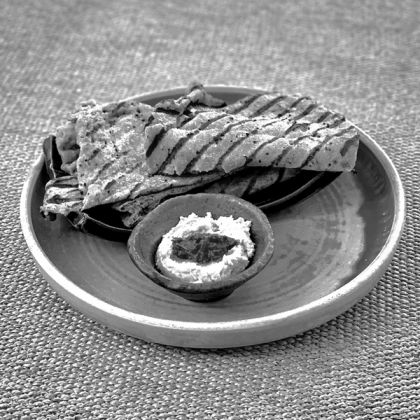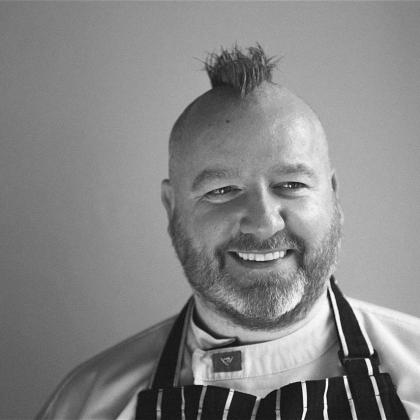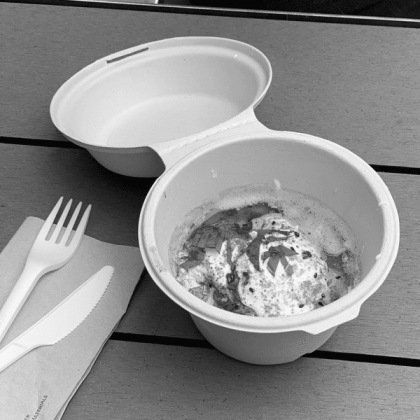The Irish Times/Healthplus
Grains of Life
We begin today with a few simple questions. Simply tick the correct answer:
1. Amaranth is: a. An Inca God. b. A by-product of uranium mining.
2. You meet a Quinoa. Do You: a. Shake hands and use a formal greeting. b. Bow respectfully and proffer a gift.
3. Teff is: a. The most popular item ordered at the IKEA restaurant outside Belfast. b. A Baltimore slang term for a junior drug dealer.
4. You are offered a Millet by a friend. Do you: a. Decline, and say drugs have never been your thing. b. Coat it in butter and enjoy it with a nice cup of tea.
5. Buckwheat is: a. A popular American cowboy series of the 1960’s, currently being re-screened on UK TV Gold. b. The college nick-name of American Vice President Joe Biden.
The correct answer to the questions is: neither A nor B. Amaranth, quinoa, teff, millet and buckwheat may sound strange and arcane, but they are strange and arcane things that your diet and your table should be intimate with, for the sake of your good health.
All of these things are grains. Not as familiar to us as oats or corn or even barley, of course, but grains that have the potential to offer us great variety in our diet, as well as great pleasure.
If your kids like to eat rice, for instance, they will adore quinoa, and it’s a cinch to cook. If you are partial to a bowl of soba noodles in AYA or Wagamama, then you have already enjoyed buckwheat, for buckwheat flour makes soba noodles, as well as those delicious buckwheat pancakes you ate in a creperie while on holiday in France.
If you need a blast of B vitamins, then millet will out-do brown rice when it comes to giving you your B fix. Quinoa is a superfood, delivering big time on plant proteins, iron, potassium and magnesium.
Amaranth, says the great American food writer Deborah Madison, contains “more of the essential amino acids than almost any other plant food… and is a strong provider of calcium”.
Teff (or Tef) is, according to Raymond Sokolov’s splendid book “With The Grain”, “the heart of Ethiopian traditional cookery. Tef flour turns into the spongy, pleasantly sour pancake-like bread known as injera, which literally underlies every Ethiopian meal. To set an Ethiopian table, one lays down a circular injera on top of which the other food is arrayed, directly, without the intermediary of any plate”.
So, how come we are missing out on all this goodness, how come we aren’t mainlining all these grains that are so important to other cuisines and cultures?
Well, it’s simply because we are unfamiliar with these foods, but getting up close to them is easy. If you buy a copy of Gaby Weiland’s new “Neantog Cookbook”, for example, then you can get stuck into making sprouted quinoa granola for breakfast, spicy millet dish for dinner, as well as barley burgers, or basmati rice with quinoa and vegetables. Wholefood cookery teachers like Gaby Weiland have long known the health benefits of these grains, as well as their versatility and deliciousness.
And sourcing these grains is simple: you will find them in plain cellophane bags in any and every wholefood shop in the country, and then it is simply a matter of knowing the basic things about how to make the most of them.
Quinoa, for instance, must be rinsed before it is cooked. Millet should be toasted in a dry pan before being simmered in water. Stirring a beaten egg into buckwheat keeps the grains nice and fluffy. A good vegetarian cookery book, such as Deborah Madison’s magisterial “Vegetarian Cooking for Everyone” will give you all the guidance you need.
And then, suddenly, instead of spuds and rice as the staples of every meal, you have the culinary kaleidoscope of these marvellous grains, foods that deliver healthfulness as well as deliciousness. The last time I wrote about grains was a year go, when this column devoted itself to oats, specifically in the form of porridge. A couple of months later, in Nenagh, I got talking to a gentleman who had read the column, and started cooking the porridge recipes each morning. “My energy levels are up by at least 50%”, he said, looking the very picture of health. So, see what percentage increase you can achieve with your energy levels.
Wouldn’t surprise me if Joe Biden was once known as Buckwheat, mind you.
(Neantog Cookbook is available from Gaby Weiland for €22 (incl. p+p), e-mail: gabywieland@eircom.net or online at www.theorganiccentre.ie or in the health stores Tir Na Nog and Key to Health in Sligo).
“Vegetarian Cooking for Everyone” is published by Broadway Books”
Grains of Life
We begin today with a few simple questions. Simply tick the correct answer:
1. Amaranth is: a. An Inca God. b. A by-product of uranium mining.
2. You meet a Quinoa. Do You: a. Shake hands and use a formal greeting. b. Bow respectfully and proffer a gift.
3. Teff is: a. The most popular item ordered at the IKEA restaurant outside Belfast. b. A Baltimore slang term for a junior drug dealer.
4. You are offered a Millet by a friend. Do you: a. Decline, and say drugs have never been your thing. b. Coat it in butter and enjoy it with a nice cup of tea.
5. Buckwheat is: a. A popular American cowboy series of the 1960’s, currently being re-screened on UK TV Gold. b. The college nick-name of American Vice President Joe Biden.
The correct answer to the questions is: neither A nor B. Amaranth, quinoa, teff, millet and buckwheat may sound strange and arcane, but they are strange and arcane things that your diet and your table should be intimate with, for the sake of your good health.
All of these things are grains. Not as familiar to us as oats or corn or even barley, of course, but grains that have the potential to offer us great variety in our diet, as well as great pleasure.
If your kids like to eat rice, for instance, they will adore quinoa, and it’s a cinch to cook. If you are partial to a bowl of soba noodles in AYA or Wagamama, then you have already enjoyed buckwheat, for buckwheat flour makes soba noodles, as well as those delicious buckwheat pancakes you ate in a creperie while on holiday in France.
If you need a blast of B vitamins, then millet will out-do brown rice when it comes to giving you your B fix. Quinoa is a superfood, delivering big time on plant proteins, iron, potassium and magnesium.
Amaranth, says the great American food writer Deborah Madison, contains “more of the essential amino acids than almost any other plant food… and is a strong provider of calcium”.
Teff (or Tef) is, according to Raymond Sokolov’s splendid book “With The Grain”, “the heart of Ethiopian traditional cookery. Tef flour turns into the spongy, pleasantly sour pancake-like bread known as injera, which literally underlies every Ethiopian meal. To set an Ethiopian table, one lays down a circular injera on top of which the other food is arrayed, directly, without the intermediary of any plate”.
So, how come we are missing out on all this goodness, how come we aren’t mainlining all these grains that are so important to other cuisines and cultures?
Well, it’s simply because we are unfamiliar with these foods, but getting up close to them is easy. If you buy a copy of Gaby Weiland’s new “Neantog Cookbook”, for example, then you can get stuck into making sprouted quinoa granola for breakfast, spicy millet dish for dinner, as well as barley burgers, or basmati rice with quinoa and vegetables. Wholefood cookery teachers like Gaby Weiland have long known the health benefits of these grains, as well as their versatility and deliciousness.
And sourcing these grains is simple: you will find them in plain cellophane bags in any and every wholefood shop in the country, and then it is simply a matter of knowing the basic things about how to make the most of them.
Quinoa, for instance, must be rinsed before it is cooked. Millet should be toasted in a dry pan before being simmered in water. Stirring a beaten egg into buckwheat keeps the grains nice and fluffy. A good vegetarian cookery book, such as Deborah Madison’s magisterial “Vegetarian Cooking for Everyone” will give you all the guidance you need.
And then, suddenly, instead of spuds and rice as the staples of every meal, you have the culinary kaleidoscope of these marvellous grains, foods that deliver healthfulness as well as deliciousness. The last time I wrote about grains was a year go, when this column devoted itself to oats, specifically in the form of porridge. A couple of months later, in Nenagh, I got talking to a gentleman who had read the column, and started cooking the porridge recipes each morning. “My energy levels are up by at least 50%”, he said, looking the very picture of health. So, see what percentage increase you can achieve with your energy levels.
Wouldn’t surprise me if Joe Biden was once known as Buckwheat, mind you.
(Neantog Cookbook is available from Gaby Weiland for €22 (incl. p+p), e-mail: gabywieland@eircom.net or online at www.theorganiccentre.ie or in the health stores Tir Na Nog and Key to Health in Sligo).
“Vegetarian Cooking for Everyone” is published by Broadway Books”






